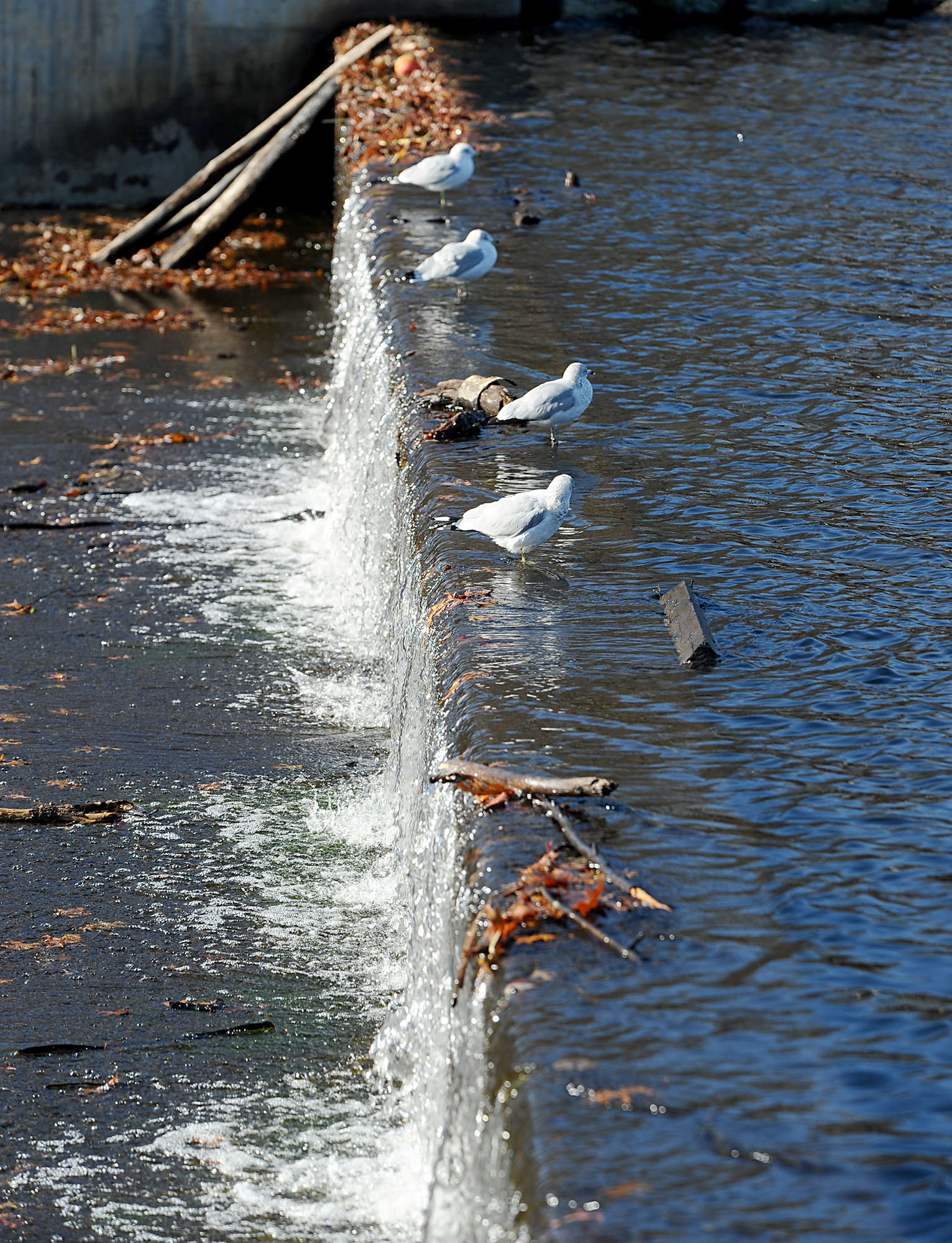Torrential Change
The MetroWest and Greater Milford regions are dotted with dams from large MWRA structures to ancient dams once used to power mills that made everything from fabric to flour. The predicted increased frequency of heavy winter and spring rainstorms has local officials worried dams not designed to handle the deluge will fail, causing property damage and perhaps loss of life. And they worry about and the enormous amount of money needed to maintain the dams to prevent breaks.
Aging dams in MetroWest and the Milford area a budget burden, pose danger
A group of people who live up and downstream of the South Natick dam stood in a loose circle, yards from where the Charles River pours over the dam’s spillway.
It was early November, one of the first mornings of the fall that was cold enough to bundle up.
Beverly Rich wore gloves, her hands clutching a notebook and pen. She and the others had gathered at 9 a.m. on a Saturday for a site tour and information session about a dam restoration project. The town wants to start the project as early as this winter.
Rich took notes on the presentation because she lives downstream, on the banks of the Charles. She and her neighbors were deluged during the historic March 2010 storms, which dumped more than 18 inches of rain across the region over 19 days.
“We had about a foot of water in our basement when our sump pumps failed,” she said. “Pretty much everybody in the whole area had water in their basement.”
That year, the Charles River reached 3 feet over flood stage in South Natick. Several other local communities near waterways went into emergency mode as their streets disappeared under dirty water.
Climate experts predict heavier rainstorms, such as the ones in 2010, will become more frequent in coming years, posing a challenge to dams across the state. If one of those storms caused a failure at the South Natick dam, the misery experienced by Rich and her neighbors in 2010 would likely multiply.
That’s why Natick Town Engineer William McDowell was pitching residents on the merits of investing in a two-phase plan to restore the dam that will cost the town roughly $1.8 million.
McDowell said Natick had recieved the same recommendations from the engineers that inspected the South Natick dam too many times to ignore them any longer.
“Once you've been told something five times and you haven't done it, if something were to happen… that looks like negligence at that point,” he told those gathered for the tour.
The South Natick dam, on Pleasant Street South, is classified by the state as a high hazard dam. That means that if it failed, if the earthen embankment that constitutes the dam eroded and broke into the river, people could die. The economic damage would likely be severe.
McDowell stressed the dam is rated by the state as being in “fair” condition, and a failure is unlikely. But that’s not a bet he wants to take.
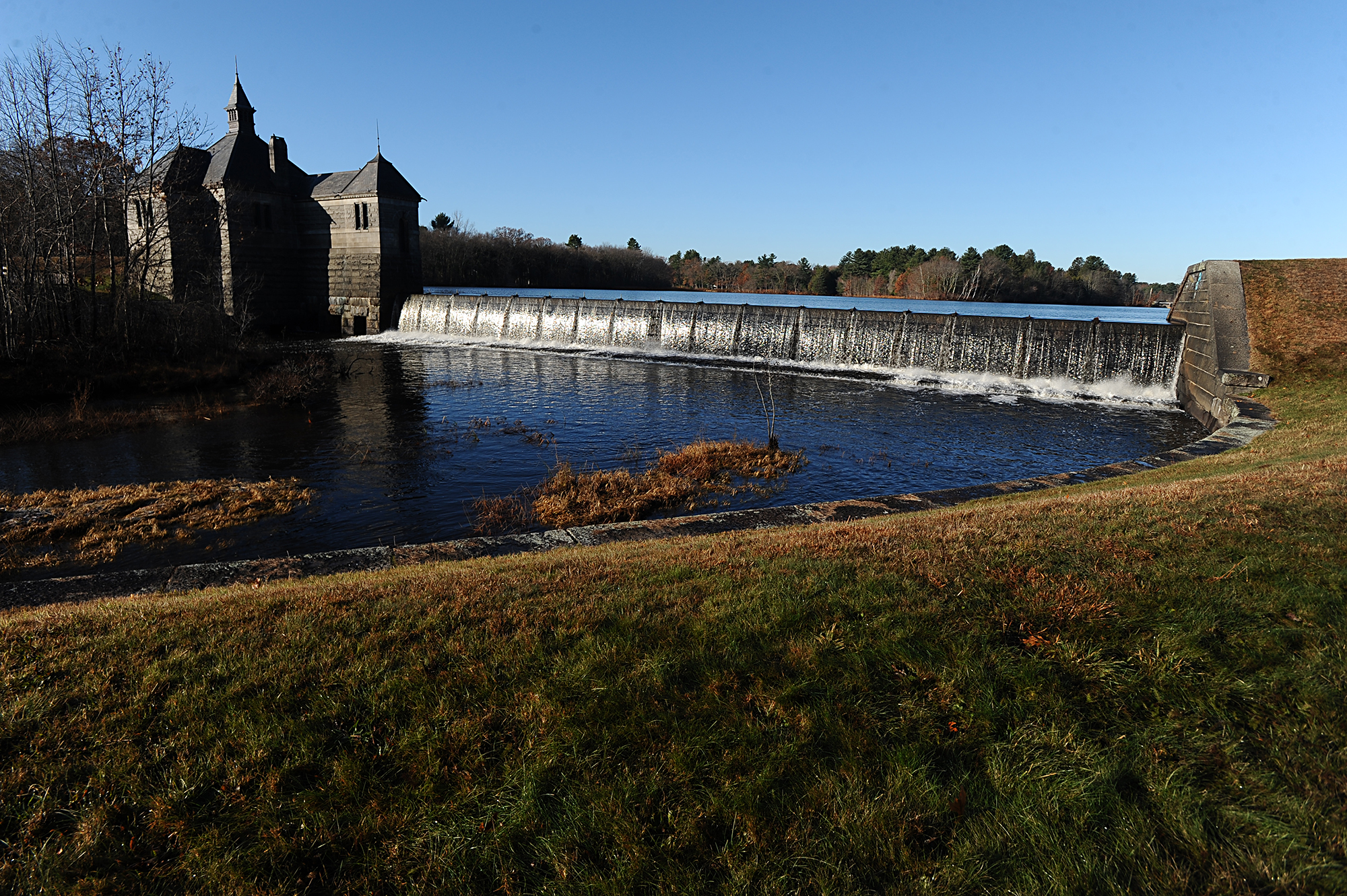
High: A dam located where structural failure will likely cause loss of life and serious damage to homes, industrial or commercial facilities, essential public utilities, main highways or railroads.
Significant: A dam located where structural failure may cause loss of life and damage to homes, industrial and commercial facilities, secondary highways or railroads or interruption of use of service of relatively important facilities.
Low: A dam located where structural failure may cause minimal property damage and loss of life is not expected.
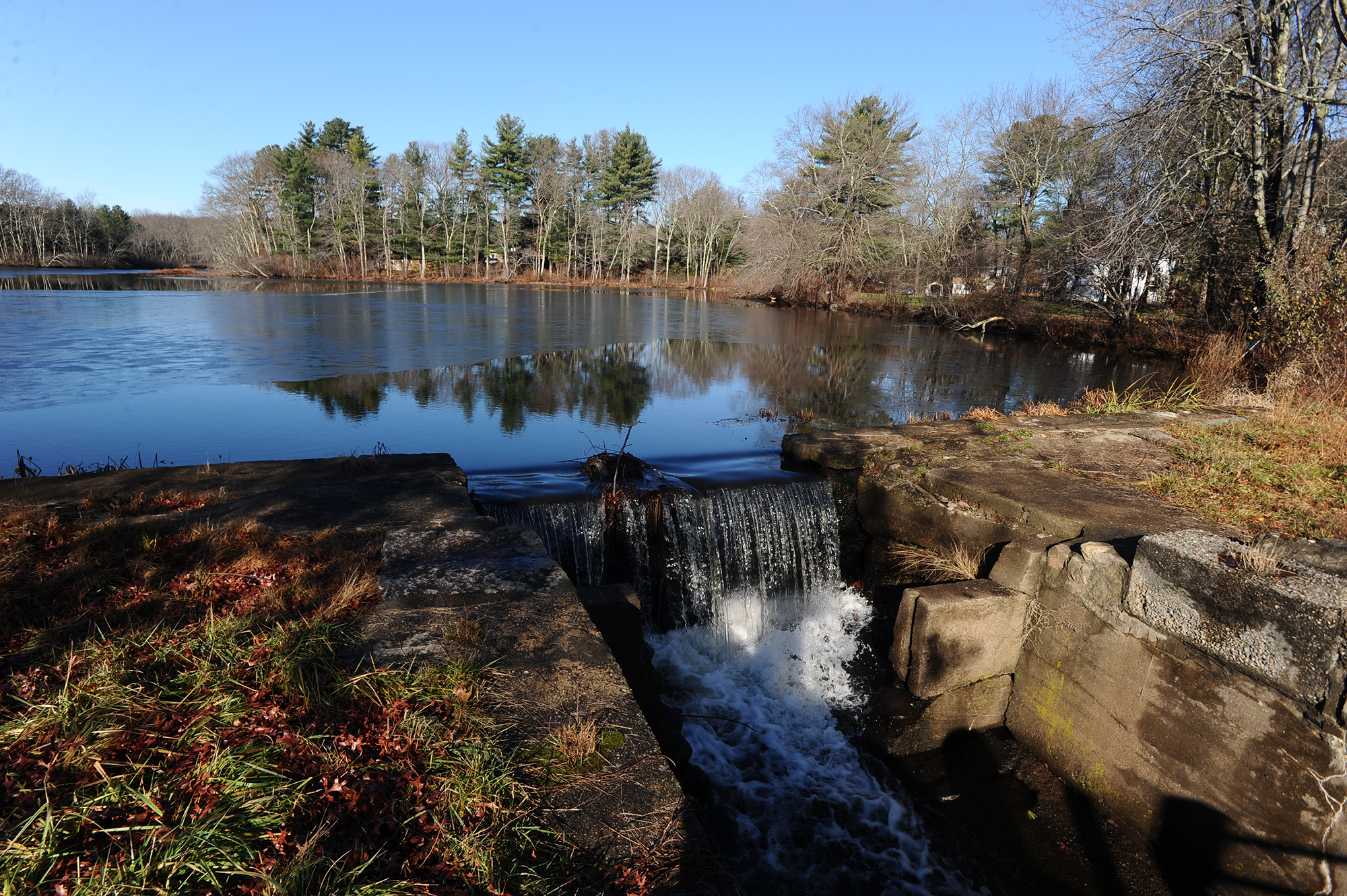
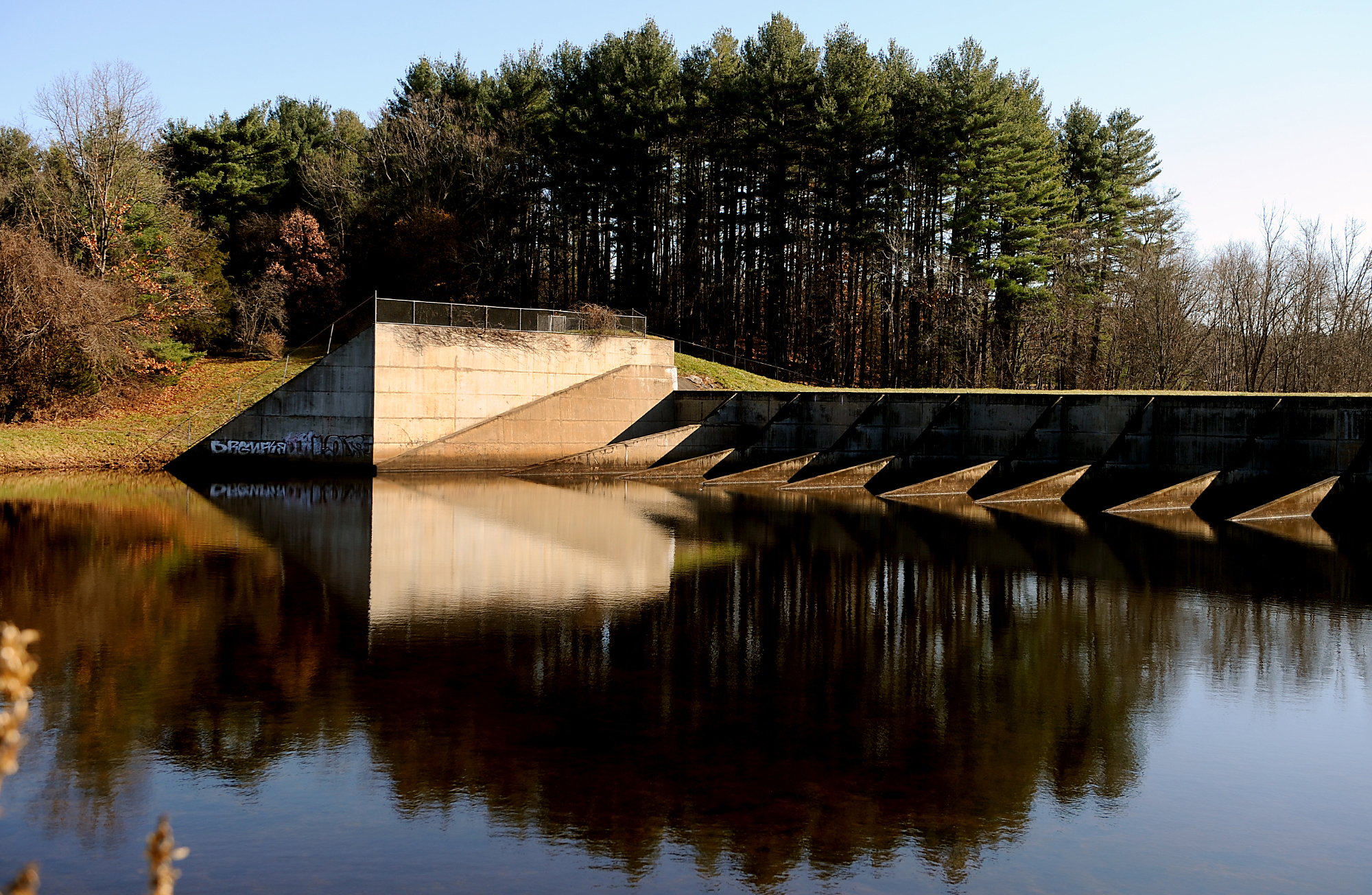
Aging dams, heavy rainfall
Natick is one of several cities and towns in the region taking a closer look at dams - ubiquitous, aging and often-neglected pieces of infrastructure.
A two-month investigation by the Daily News into the condition of the region’s dams found there’s a lot of work to do. Several aging structures are in poor condition, and many don’t have the legally required emergency response plans in case they fail.
For our analysis, we focused on dams in 18 MetroWest and Greater Milford cities and towns. We focused on the 73 area dams under the jurisdiction of the DCR’s Office of Dam Safety, which regulates dams that are higher than 6 feet, store more than 15 acre feet of water behind them or that fit within certain uses.
Here are some of the problems and shortcomings the Daily News investigation found:
1. Twenty percent of significant-hazard dams - which could cause loss of life and serious economic damage if they failed - in the region are in "poor" condition.
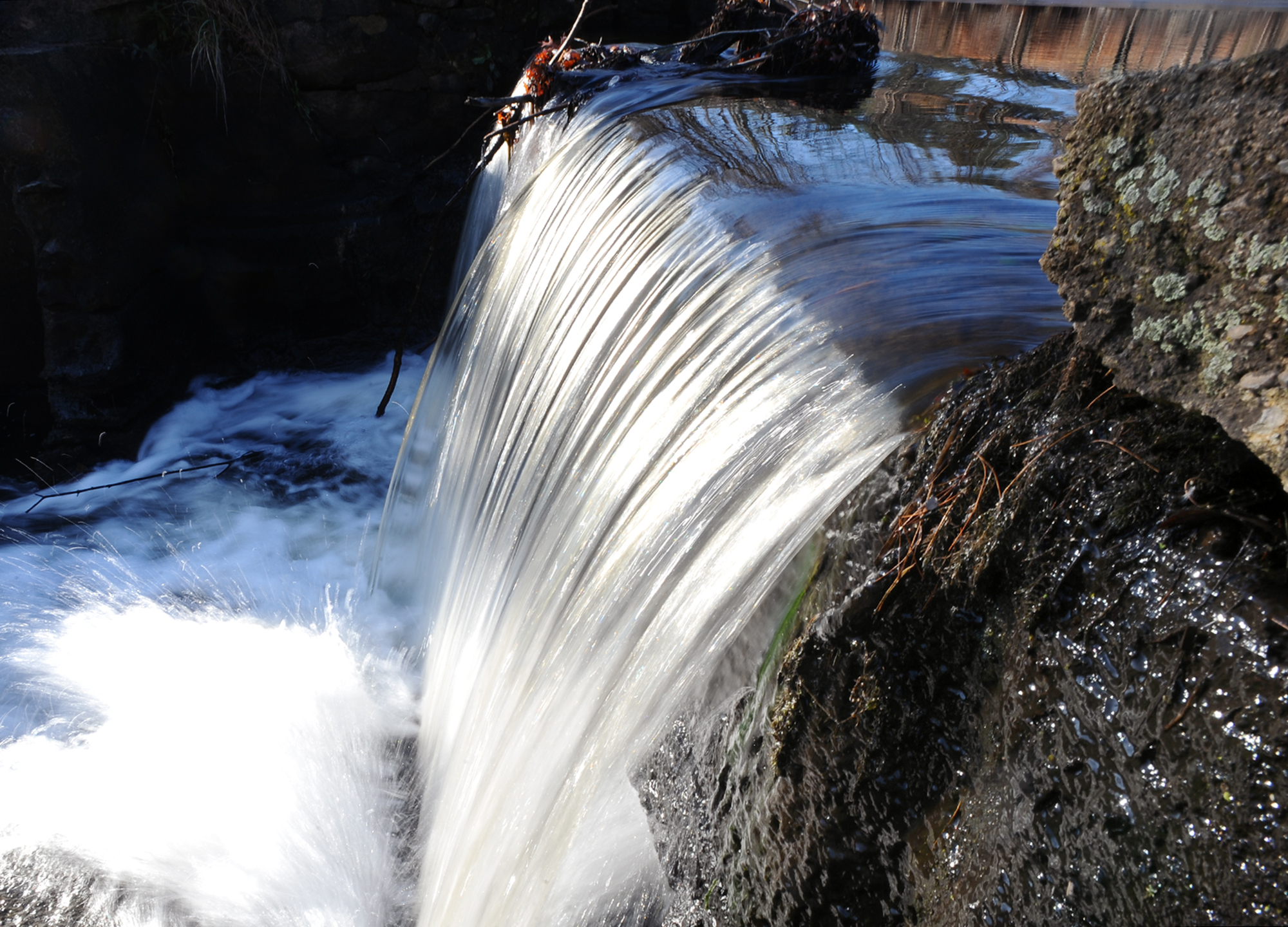
2. All five of Holliston’s dams are in “poor” condition, including Houghton Pond dam, a municipally-owned high-hazard dam built in 1898. Failure of a high-hazard dam would cause loss of life and serious damage to homes, essential public utilities and main highways and/or railroads. Two of Holliston’s significant-hazard dams, also considered by the state to be in “poor” condition, do not have emergency plans on file with the state, as required.
3. Seventeen of 73 dams in the MetroWest and Milford area do not have the legally required emergency dam failure plans in place, according to the state. A quarter of those dams are in poor condition.
4. Two of the 73 dams the Daily News looked at in the region are rated as being in “unsafe” condition. One of those dams, the Hager Pond dam, is in Marlborough. That dam, last inspected on Nov. 15, 2018, is a high-hazard dam. The owner, and age, of that dam is unknown. The other, called the West Medway dam, is in Medway. That dam, last inspected on March 5, 1998, is a low-hazard dam - meaning if it failed, minor property damage would be expected - owned by Medway Power and Electric that was built in 1850, according to the U.S. Army Corps of Engineers’ 2018 dam inventory.
It will take nearly $45 billion to repair aging but critical high-hazard dams nationwide, according to an estimate cited by the American Society of Civil Engineers. Inspecting the dams in our region, repairing them and planning for a failure will cost dam owners - individuals, private businesses, state agencies and cities and towns - millions of dollars. Grants are available, but most of the cost will be borne by taxpayers.
The information used in our analysis came from data provided by the Office of Dam Safety in response to public records requests by the Daily News, unless otherwise noted.
'Part of the landscape'
There are a total of 2,962 dams in the state, according to data provided to the Daily News by the Department of Conservation and Recreation (DCR). Of those, 1,428 fall under the jurisdiction of the DCR’s Office of Dam Safety.
Dams across the state all look different. Some, like the South Natick dam, built in 1934, are mounds of earth that more closely resemble a woodsy park than a dam. But many of the state’s dams are much older remnants of the region’s many mills that were once powered by water to make everything from fabric to flour.
The average age of a dam in Massachusetts is 97 years old, according to a 2018 inventory of dams by the U.S. Army Corps of Engineers. Six dams included in the inventory, which is not comprehensive, were built in the 1600s, eight in the 1700s and more than 200 in the 1800s.
“Dams in New England are just part of the landscape,” said Alison Bowden, conservation director of Rivers, Coasts and Lands at the Nature Conservancy. “They’re nothing that anybody thought very much about.”
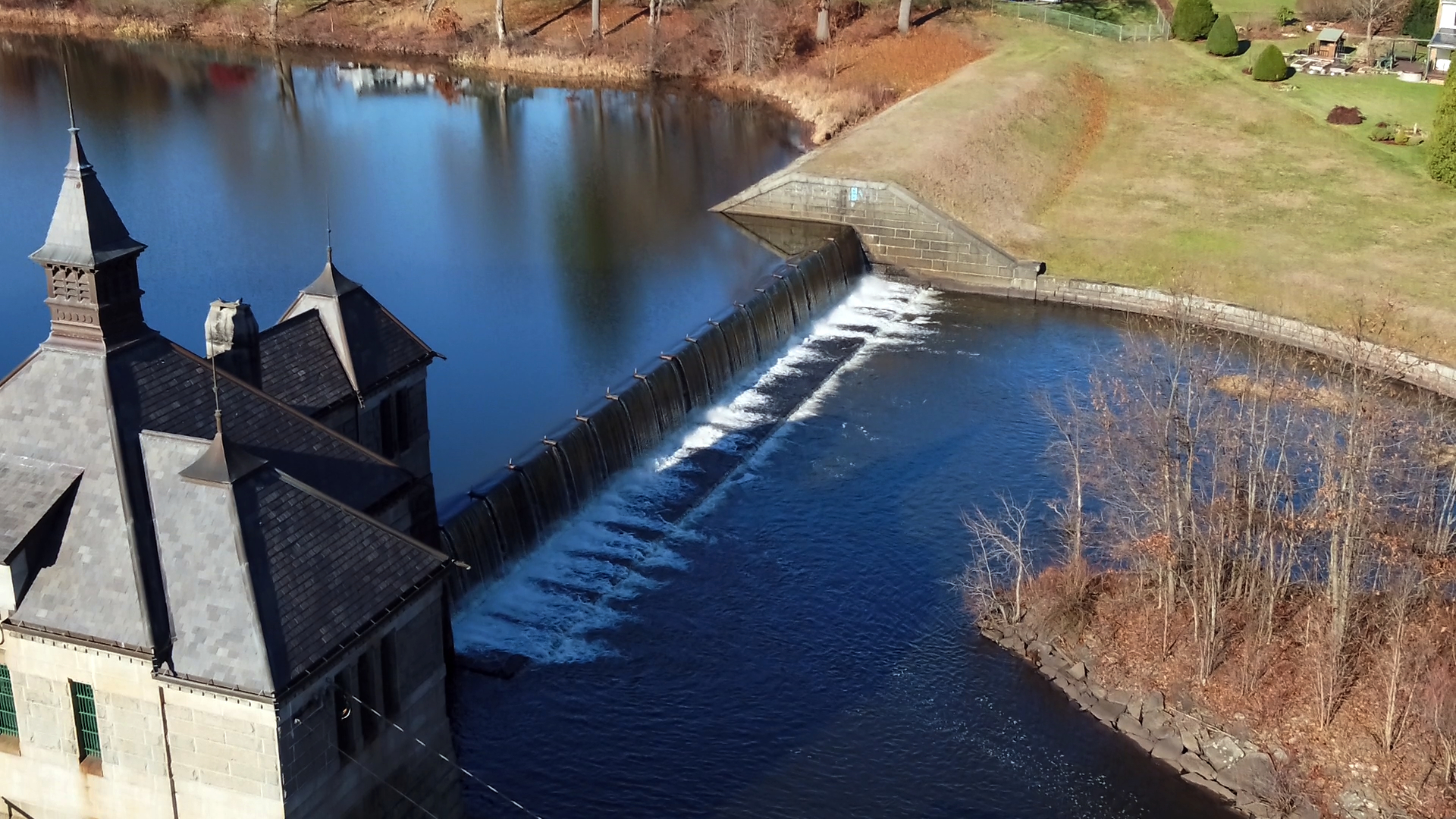
Lori Spragens, executive director of the Association of State Dam Safety Officials, said dams have always been “out of sight, out of mind.”
“They were built at a time when they were out in the middle of nowhere,” she said. “It didn’t matter so much if you had issues. Even if they failed, it didn’t affect anybody. We have so much population growth that there are people living downstream of these dams now.”
That “out of sight, out of mind” mentality started to change in 2005, Bowden said. That year, the state was shaken to attention when Taunton’s privately-owned Whittenton Pond dam threatened to release a wave of water up to 12 feet high into the city’s downtown.
Though the dam had been rated as being in fair condition during an inspection two years earlier, heavy rain caused the 170-plus-year-old structure to buckle and bend under the pressure of the water in the pond behind it.
Nearly 2,000 people were evacuated from their homes when officials warned the dam had lost a timber column and could break within 24 hours. Dive teams were assembled in case people needed to be rescued from a flood. National Guard troops were deployed.
“It was such an unusual idea, I think, that this piece of infrastructure that nobody had been paying any attention to could cause such a problem,” Bowden said. “All of a sudden, we had this pretty small dam, pretty unassuming, causing all these problems. And as it turned out, we would have many more of those types of storms in close succession.”
The Northeast is already experiencing increasingly intense rainfall. That intensity will only worsen in coming years, according to the national climate assessment. In addition to being more intense, storms in this area are projected to be more frequent and generate more rain.
For many dam owners, climate change is one factor making dam repair and emergency planning a relatively new, and costly, priority.
‘A money pit’
Earlier this fall, a drone hovered a few feet from the stone face of the Sudbury Reservoir dam in Southborough. It flew in a long line across the width of the massive structure, methodically recording the intersection of each stone block before dropping down to record the next row of stones.
The drone was inspecting the quality of every cement joint in the dam, and contractors working for the Massachusetts Water Resource Authority, which owns the dam, will use the footage it captured to create a detailed map of the joints that need repair.
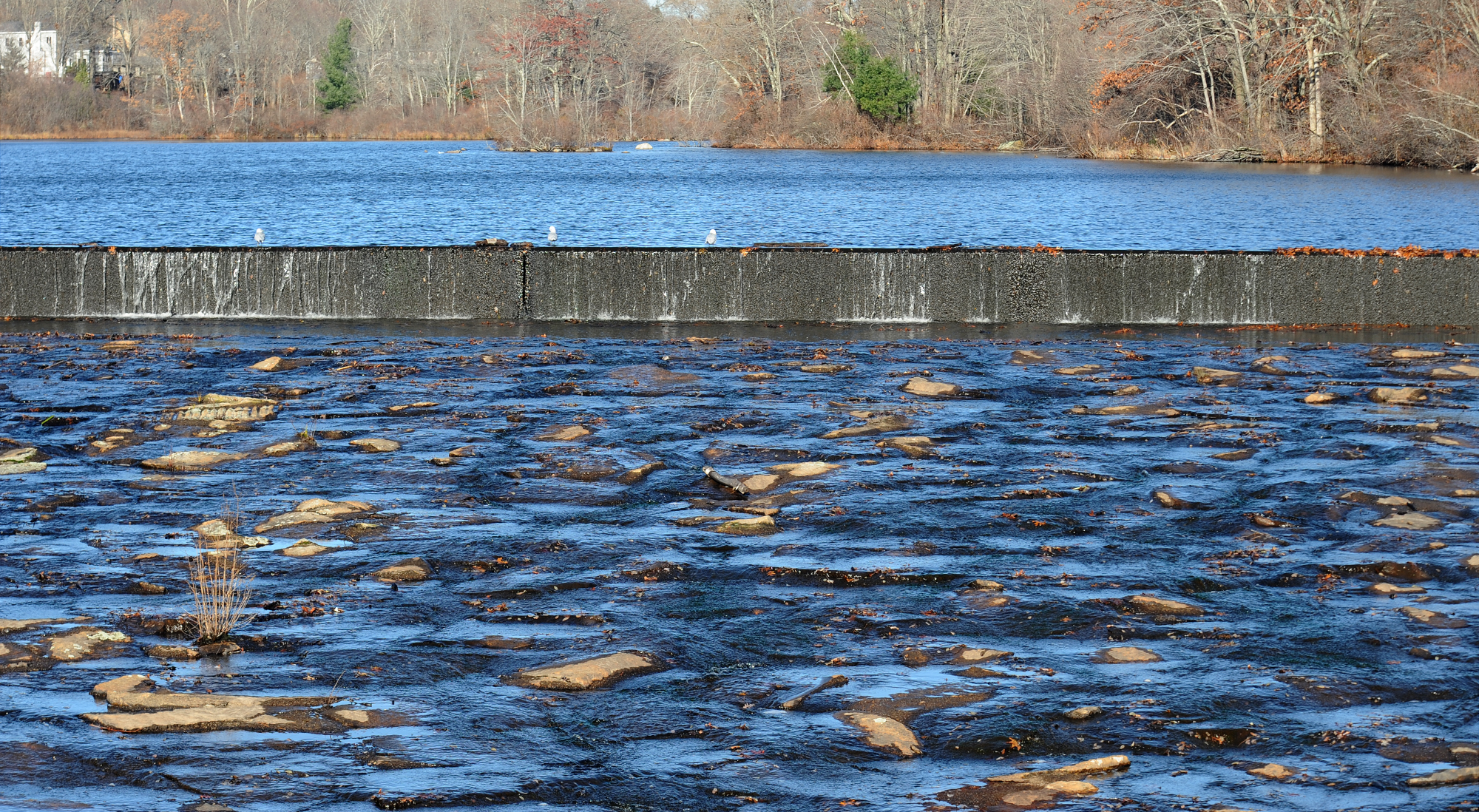
“Then the contractor can price up how many linear feet or work he has to do,” said Dave Coppes, chief operating officer at the MWRA.
Repair costs differ for each dam, but as a rule, they're high. Getting the region’s dams prepared for the strain they will likely face in coming years will cost many millions of dollars.
Milford Town Meeting recently set aside $138,000 to evaluate and repair the Cedar Swamp Pond dam, which was built in 1939. The state recently gave out grants for dam projects, and most of them were north of $500,000, including two dam repair grants each worth $1 million.
“That’s actually not a real lot,” said Scott Crisafulli, Milford Department of Public Works highway surveyor, of the $138,000. “We've had other dams, like Louisa Lake, we had an estimate of $600,000 in work.”
Costs like that, Crisafulli said, should start to be incorporated into municipalities’ long-term budget forecasts.
Standing on the earthen embankment that constitutes the Foss Dam, sometimes referred to as Framingham Reservoir #3 Dam, Coppes said dam repair is essentially a never-ending cost.
“These are old structures,” he said. “This is almost 140 years old. We’re never going to not have to put money into maintaining this thing.”
Holliston Town Administrator Jeff Ritter called the town’s dams “a money pit.”
All five of Holliston’s dams, four of which are listed by the state as being owned by the town, are rated as being in “poor” condition.
In 2018, the town received a letter from the DCR about the Lake Winthrop dam, a significant hazard dam. The letter was written notification that the town had failed to comply with orders to bring the dam into compliance with dam safety regulations after inspections repeatedly found the dam to be, as stated in the letter, “STRUCTURALLY DEFICIENT and in POOR CONDITION.”
Ritter said the town has done the best it can with the resources it has.
“I get letters all the time from the state and on dams, but my position has been that we are making an investment, we're appropriating money, we're doing something,” Ritter said. “It all boils down to money and staffing and manpower.”
The town recently ramped up efforts to lessen the cost burden, Ritter said. During a meeting with its consultants, Lenard Engineering Inc., town staff began questioning whether Holliston actually owns the dams and is responsible for the aging structures.
In late October, Holliston Town Meeting approved an article appropriating $45,000 to determine the condition and legal ownership of the town’s dams. The article passed with no pushback, Ritter said.
“This is a recurring cost to the town, and we're trying to either manage the bleeding or stop the bleeding,” Ritter said. “But this is going to take years to resolve. Meanwhile, we'll continue to do the inspections and we'll do the maintenance on the structures until we can determine actual ownership.”
HOW OFTEN DO DAMS NEED TO BE INSPECTED?
According to the Office of Dam Safety, owners of dams are required to hire a qualified engineer to inspect and report results every 2 years for high hazard potential dams, every 5 years for significant hazard potential dams and every 10 years for low hazard potential dams.
Dam removal as a trend
Next May, Holliston Town Meeting members could well be asked to spend more money to deal with the town’s dams, Ritter said, adding that the cost of dams is sustainable in a good economy, but not in a bad one.
If the town does own the dams, or if another able caretaker can’t be found, the town will start to investigate getting rid of certain dams altogether, he said.
That’s an increasingly popular option among municipalities weary of the burden dams place on their budgets - and taxpayers. The state Division of Ecological Restoration has removed more than 40 dams since 2005, according to that agency.
Now that many of the region’s mills are closed, the dams they built to power them are no longer needed. Instead, they are valued for the beautiful - but artificial - ponds they’ve created.
In Holliston, the Factory Pond dam helped create Factory Pond, across the street from the scenic and newly rehabbed 8 Arch Bridge. Decommissioning it, thereby draining the pond, would alter the town’s landscape and potentially cause problems for landowners who bought property near a pond, and expected that pond to remain.
If the dam is left in place, continues to be poorly maintained and is stressed by a heavy storm, though, it could let go, wash out Woodland Street and damage the newly-renovated bridge. The town doesn’t have a plan on file of what to do if that unlikely, but possible, event occurred.
“That would not be a good thing to happen, obviously, because that’s even more money,” Ritter said. “So we’re trying to do some preventative maintenance here and develop a prevention plan to address the conditions of the dam.”
The MWRA has already spent millions repairing its dams. The authority is perhaps more motivated to keep its dams in good condition than other dam owners. That’s because each dam the MWRA is responsible for is connected to a body of water, usually a reservoir, that supplies water to the region. Most other dams are primarily tied to recreational purposes.
“This is a backup system,” said MWRA Executive Director Fred Laskey, gesturing to the gray-blue reservoir behind Framingham’s Foss dam. “Our first priority is to make sure that drinking water is safe and that we have ample quantities of it. A key part of that is making sure that dams hold up.”
Since approximately 2005, the MWRA has invested about $22 million in repairs, and the authority currently has an additional $2.5 million budgeted for future repairs and maintenance, according to the MWRA.
At Foss Dam, a high-hazard dam last rated as being in satisfactory condition, the MWRA has already repaired the dam gates and spillway.
Next up on the list of repairs is the installation of a protective mat underneath the dam’s grassy top that will prevent erosion, and dam failure, in the event of a 500-year storm. That protective mat is a precaution, and a cost, directly linked to climate change.
“What’s occurred with climate change is that the kind of historic rules have been thrown out the window by these sophisticated prediction models,” Laskey said. “What the predictions are showing is that we’re going to go from it basically raining twice a week on average to these long dry periods followed by wetter, intense downpours, tropical deluges.”
Professor Kenneth Strzepek, a research scientist at M.I.T.’s Joint Program on the Science and Policy of Global Change and who has studied climate change, infrastructure resilience, regional planning and engineering, said the standards of readiness for dams are changing.
The average age of a dam in MetroWest and the Milford area is 97 years old. Back then, Strzepek said, engineers were designing dams to withstand storms that were unlikely, but are becoming more common now.
“That's the problem for dams in New England,” Strzepek said. “If they were designed for a risk of one in 500, that event may now be occurring in a one in 100 year time frame. It's happening much more frequently. So we're not protecting it to the same level as we were in the past.”
Strzepek said cities and towns don’t necessarily have to accept projected climate conditions, but they should at least be building infrastructure like dams using the last 30 years of storm data, instead of the last 100 years of storm data, because more recent storms are more representative of what to expect in the future.
“We’re saying, don’t continue to do something silly because that’s what you always did,” he said. “If we have new information which says the last 30 years is on average 2 inches more of rain, then let’s design based on that.”
